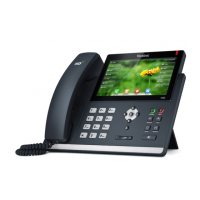Administrator’s Guide for SIP-T2 Series/T19(P) E2/T4 Series/CP860 IP Phones
vi
they are involved in a procedure or user action (e.g., Click on
Settings->Upgrade.).
Also used to emphasize text (e.g., Important!).
Used to show the format of examples (e.g.,
http(s)://[IPv6
address]
), or to show the title of a section in the reference
documentations available on the Yealink Technical Support
Website (e.g.,
Triggering the IP phone to Perform the Auto
Provisioning
).
Used for cross references to other sections within this
documentation (e.g., refer to Ring Tones on page 659), for
hyperlinks to non-Yealink websites (e.g, RFC 3315) or for
hyperlinks to Yealink Technical Support website.
Used for hyperlinks to Yealink resources outside of this
documentation such as the Yealink documentations (e.g.,
Yealink_SIP-T2_Series_T19(P)
E2_T4_Series_CP860_IP_Phones_Auto_Provisioning_Guide
).
The information detailed in this guide is applicable to firmware version 80 or higher. The
firmware format is like x.x.x.x.rom. The second x from left must be greater than or equal
to 80 (e.g., the firmware version of SIP-T23G IP phone: 44.80.0.60.rom). This administrator
guide includes the following chapters:
Chapter 1, “Product Overview” describes the SIP components and SIP IP phones.
Chapter 2, “Getting Started” describes how to install and connect IP phones,
configuration methods and resource files.
Chapter 3, “Configuring Basic Features” describes how to configure the basic
features on IP phones.
Chapter 4, “Configuring Advanced Features” describes how to configure the
advanced features on IP phones.
Chapter 5, “Configuring Audio Features” describes how to configure the audio
features on IP phones.
Chapter 6, “Configuring Security Features” describes how to configure the security
features on IP phones.
Chapter 7, “Troubleshooting” describes how to troubleshoot IP phones and
provides some common troubleshooting solutions.
Chapter 8, “Appendix” provides the glossary, reference information about IP
phones compliant with RFC 3261, SIP call flows and the sample configuration files.

